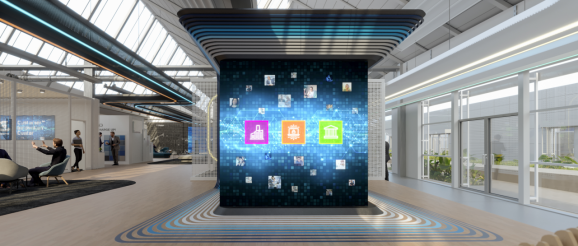The rise of the customer innovation center | The Drum

The customer experience center (CEC) is nothing new. Since Lou Carbone coined the phrase in 1994 the CEC, or brand innovation center, has been a stalwart of big business marketing. The rather staid cousin to the exciting experiential event strategy, the average blue-chip company still has four to five centers worldwide.
But now, in the form of a new breed of customer innovation centers, CECs have gone experiential too, rising to the challenge of providing innovative, memorable experiences for many B2B businesses.
And it is a real challenge. Even before the pandemic hit, McKinsey research confirmed the B2B customer experience index lagged significantly behind retail with an average of less than 50%, compared to the B2C score of 65-85%.
A revolution in thinking was needed and the CEC stepped once more out of the shadows. Not to be confused with innovation labs, the brainchild of silicon-valley R&D and worthy of their own discussion, new CECs are being launched all the time – Gap Inc, Belden and Fisker are due to launch their inaugural spaces this autumn. Agency advertising and thought leadership in this area is growing and CEC enquiries abound.
But why, and more importantly how, can a CEC, confined by its very nature, support a brand’s strategy in markets that never stop seesawing?
Brand identity
Trade- and roadshows are returning, and brands face a challenge in meeting new customers, while also facing a lost connection with their own people.
This was particularly important to 2Heads client Belden, the US network and connectivity giant, which wanted to connect its staff and contractors for the first time in a continual experience beyond an intranet. Launching its virtual and physical CEC in Stuttgart this summer, it now has plans for two more hybrid centers. For that business, its CECs created a structured brand identity from which its teams could launch the next chapter of products.
Storytelling and narrative are always high on the agenda for an experience center. It’s not about telling every company story; that just generates noise. It is about finding a compelling reason for the CEC’s existence that can generate press/peer excitement and involve visitors in the journey even before it launches.
A great example of this was the announcement of EY and IBM’s Center of Excellence launch in May 21. The story behind its creation was compelling: a space to accelerate digital transformation for financial service institutions. The narrative will continue with the launch of a virtual hub accessible to all finance professionals.
The new office
Many brands are rethinking how to engage their own people. The brand experience for a member of staff used to happen in the office. Brand identity was ingrained in the walls and in the desks. But how do home workers gain that experience? Enter a new range of hybrid CECs that aim to bring people back to the fold.
PWC’s experience center’s ethos is of flexible environments, virtual or in-person, that use real-time simulations and advanced technology to help employees navigate challenges. This extends the PWC service to a new audience, and it allows them to white label their own internal CECs. Clever stuff.
Flexibility and permanence are important considerations here. And by repurposing unused office space and incorporating movable spaces, the new breed of CEC has a social conscience.
Embedding change
Today, constantly evolving company positioning is inevitable. But how do you bring people along on that journey? By creating a brand experience ecosystem that resides within an open communication environment and making it accessible 24/7 for all. The rise in virtual CECs is proving valuable in change management, handing back control to a brand. We saw this when creating the virtual CEC for Vodafone, which was not just a virtual environment, but the start of a hybrid network.
Social leveling
The use of mutual environments for social advancement may be the single most important reason for CEC advancement. With the advent of hybrid compatibility, those who could not previously experience these opportunities will soon be able to. Take a look at the Propel Center initiative recently launched by Apple, a first-of-its-kind virtual innovation and learning hub within the physical Atlanta University campus.
Hybridization is not about getting a virtual audience attached to a moment of live experience, but a more continuous connection that avoids brand splits. CECs may be the perfect hybrid experience.
And that takes us to the heart of a CEC’s potential. Over the next decade, when brands speak to agencies, they will be looking for experiential, not hybrid/live/virtual. The format will be part of the solution, and well-considered CECs will be essential.
Scale and cost will always be a factor, but growing CEC demand will generate a new level of peer competition that will push creativity and innovation, reducing those factors’ impact. And with intuitive profiling and AI experience curation, the world of CEC is changing, bringing to life brands in a way we’ve not yet seen before.
